
PUMPA - SMART LEARNING
எங்கள் ஆசிரியர்களுடன் 1-ஆன்-1 ஆலோசனை நேரத்தைப் பெறுங்கள். டாப்பர் ஆவதற்கு நாங்கள் பயிற்சி அளிப்போம்
Book Free DemoFertilisation results in the zygote formation that develops into an embryo.
Zygote repeatedly divides to form hundreds of cells that forms like a hollow ball called the embryo. The embryo moves down the oviduct and gets embedded or attached to the uterine wall to develop further. This is termed as implantation.
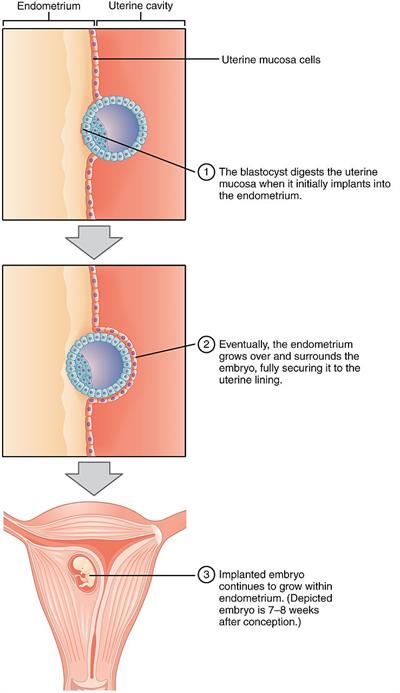
The embryo develops in the uterus and receives food, oxygen from the blood vessels in the uterus by placenta..
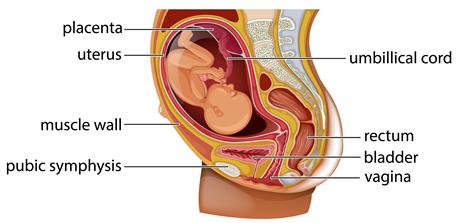
Fetal development
The cells present in the embryo forms groups which develop into the various tissues, parts (head, hands, legs) and the organs of the body. Embryo grows into a foetus, and the foetus develops into a new offspring.
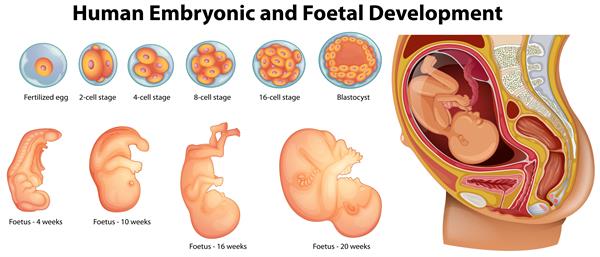
Stages of human embryo development
In an embryo, when all parts of the body can be identified, it is termed a foetus.
A human embryo is termed foetus after \(8\) weeks of pregnancy.
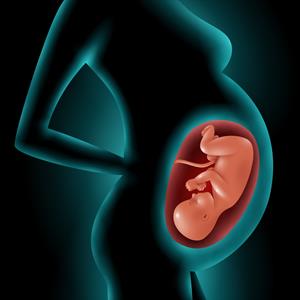
It takes nearly 38 weeks from the fertilisation of the egg to the formation of a baby. When the foetus development is complete, the mother gives birth to the foetus.
The expelling of the fully-grown foetus from the mother's body is known as parturition.
In vitro fertilisation (IVF)
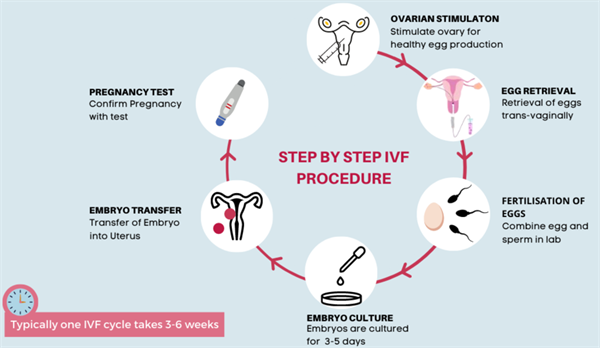
In vitro fertilisation (IVF)
In general, the fertilisation of the egg by the sperm takes place in the fallopian tube. The fallopian tube of few persons may be blocked due to some reason, and those females lack fertility.
Because of the failure of fertilisation in the fallopian tube, and such females are naturally sterile. To help these females, in vitro fertilisation (IVF) technique will be helpful.
In this process,
- The egg of the donor female and the sperm of the donor male is collected.
- The sperm is allowed to fuse with the egg for fertilisation.
- The fertilisation occurs outside the body but in the laboratory. And, this process is known as in vitro fertilisation (IVF).
- After fertilisation, the zygote is allowed to develop for a one-week embryo, and the embryo is transferred to the mother's uterus.
- After successful embryo implantation in the uterus, the embryo is allowed to grow for the complete development of the foetus.
- Once the foetus developed after the 9th month, the parturition will occur (expelling for the fully-grown foetus).
- The babies born through IVF are called test-tube babies.
Important!
\(IVF\) was used in humans successfully in the year \(1978\).
Reference:
https://upload.wikimedia.org/wikipedia/commons/thumb/3/39/2905_Implantation.jpg/1024px-2905_Implantation.jpg
https://www.vecteezy.com/vector-art/296845-diagram-showing-human-embryonic-and-foetal-development
https://www.vecteezy.com/free-vector/pregnant-woman-silhouette?license-free=true&page=2
https://upload.wikimedia.org/wikipedia/commons/thumb/6/66/In_Vitro_Fertilization_%28IVF%29_-_English.png/1024px-In_Vitro_Fertilization_%28IVF%29_-_English.png
https://www.freepik.com/free-vector/pregnant-fetus-anatomy-diagram_10108457.htm#page=1&query=placenta&position=6